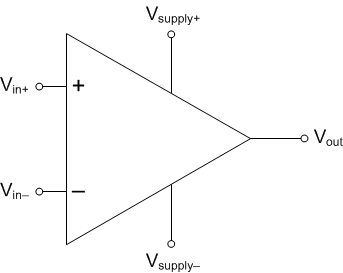SBOS714 November 2014 OPA4277-EP
PRODUCTION DATA.
- 1 Features
- 2 Applications
- 3 Description
- 4 Revision History
- 5 Pin Configuration and Functions
- 6 Specifications
- 7 Detailed Description
- 8 Application and Implementation
- 9 Power Supply Recommendations
- 10Layout
- 11Device and Documentation Support
- 12Mechanical, Packaging, and Orderable Information
Package Options
Mechanical Data (Package|Pins)
- D|14
Thermal pad, mechanical data (Package|Pins)
- D|14
Orderable Information
7 Detailed Description
7.1 Overview
The OPA4277-EP precision operational amplifier replaces the industry standard OP-177. It offers improved noise, wider output voltage swing, and is twice as fast with half the quiescent current. Features include ultra-low offset voltage and drift, low bias current, high common-mode rejection, and high power supply rejection.
7.2 Functional Block Diagram

7.3 Feature Description
The OPA4277-EP operates from ±2- to ±18-V supplies with excellent performance. Unlike most operational amplifiers which are specified at only one supply voltage, the OPA4277-EP precision operational amplifier is specified for real-world applications; a single limit applies over the ±5- to ±15-V supply range. High performance is maintained as the amplifier swings to the specified limits. Because the initial offset voltage (±50 μV max) is so low, user adjustment is usually not required.